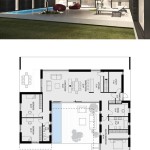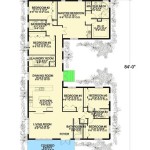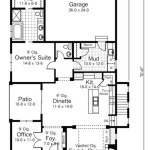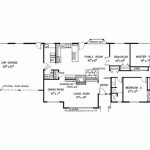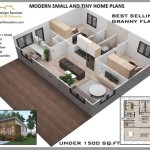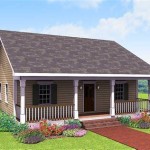Tiny House Floor Plan With Dimensions: A Comprehensive Guide
The allure of tiny house living stems from various factors, including financial freedom, environmental consciousness, and a desire for a simpler lifestyle. A crucial aspect of realizing this dream is meticulously planning the floor plan. Understanding and utilizing dimensions effectively is paramount to creating a functional and comfortable tiny house that meets individual needs and preferences. This article provides a comprehensive overview of tiny house floor plans with dimensions, covering key considerations and practical examples.
Understanding Tiny House Dimensions and Regulations
Before diving into specific floor plan layouts, it is essential to grasp the standard dimensions and any regulatory limitations associated with tiny houses. These regulations can vary significantly depending on the location, so thorough research is crucial.
Generally, a tiny house is defined as a dwelling under a certain square footage, typically ranging from 400 to 600 square feet. However, some regions have specific definitions and may impose further restrictions on dimensions, such as maximum width, height, and length, especially if the tiny house is intended to be mobile.
The width of a tiny house on wheels (THOW) is often limited by road regulations. A common maximum width is 8.5 feet, although some areas allow up to 10 feet with special permits. The length of a THOW, including the trailer, usually has a maximum limit, often around 40 feet, but this can vary significantly.
Height restrictions are also important, especially regarding bridges and overpasses during transportation. The total height, including the trailer, is typically limited to around 13.5 feet. Exceeding these dimensions may require special permits and incur additional transportation costs.
Furthermore, building codes and zoning regulations may apply, particularly if the tiny house is placed on a permanent foundation. It is essential to consult local authorities and building officials to ensure compliance and avoid potential legal issues.
Key Considerations for Tiny House Floor Plan Design
Designing a tiny house floor plan requires careful consideration of various factors to maximize space and functionality. These factors include intended use, lifestyle, and personal preferences.
First, consider the number of occupants. A floor plan suitable for a single person will differ significantly from one designed for a couple or a small family. Each occupant needs adequate personal space and storage.
Second, evaluate the intended use of the tiny house. Will it be a primary residence, a vacation home, or a rental property? The intended use will influence the layout and features included in the floor plan.
Third, analyze your lifestyle and daily routines. Consider the activities that will take place in the tiny house, such as cooking, working, sleeping, and entertaining. Allocate space accordingly and prioritize the most important activities.
Fourth, consider storage needs. Tiny houses require clever storage solutions to minimize clutter and maximize usable space. Integrate storage into every available nook and cranny, such as under beds, stairs, and benches. Vertical storage is also crucial in a small footprint.
Fifth, think about natural light and ventilation. Maximize natural light by incorporating large windows and skylights. Proper ventilation is essential to prevent moisture buildup and maintain air quality. Consider cross-ventilation strategies by placing windows on opposite sides of the house.
Sixth, plan for utilities and plumbing. Determine the location of the bathroom, kitchen, and laundry area. Plan for water and sewage connections, electrical wiring, and heating and cooling systems. Consider off-grid options, such as solar panels and composting toilets, if desired.
Finally, consider accessibility. If accessibility is a concern, design the floor plan with wider doorways, ramps, and accessible bathroom fixtures. This may require additional space but can significantly improve usability for individuals with mobility limitations.
Practical Examples of Tiny House Floor Plans with Dimensions
To illustrate the concepts discussed above, here are some practical examples of tiny house floor plans with dimensions, highlighting different layout strategies and design features.
Example 1: The Compact Studio (8ft x 20ft)
This floor plan is designed for a single person or a minimalist couple. The overall dimensions are 8 feet wide and 20 feet long, providing a total of 160 square feet of living space.
Upon entering, there is a small kitchenette along one wall, featuring a compact sink, a two-burner cooktop, and a small refrigerator (approximately 6ft x 4ft). Adjacent to the kitchenette is a small dining area with a folding table and two chairs (approximately 4ft x 4ft).
The main living area occupies the center of the space (approximately 8ft x 8ft). It can accommodate a sofa or a futon that can be converted into a bed at night. A small coffee table and some shelving units provide storage.
At the rear of the tiny house is the bathroom (approximately 4ft x 6ft). It includes a composting toilet, a shower, and a small sink. Ventilation is provided by a small window.
Storage is integrated throughout the tiny house, including under-bed storage, overhead cabinets, and built-in shelving units. The dimensions listed are approximate, and can be adjusted based on specific needs.
Example 2: The Lofted Bedroom (8.5ft x 24ft)
This floor plan features a lofted bedroom, allowing for more living space on the ground floor. The overall dimensions are 8.5 feet wide and 24 feet long, providing a total of 204 square feet of living space.
The entrance leads into the main living area (approximately 8.5ft x 10ft). There is enough space for a sofa, a coffee table, and a small entertainment center. Large windows provide natural light.
The kitchen is located along one wall (approximately 6ft x 8ft) and includes a sink, a cooktop, a refrigerator, and ample counter space. Overhead cabinets and drawers provide storage.
The bathroom is located at the rear of the tiny house (approximately 4ft x 6ft) and includes a shower, a toilet, and a sink. A small window provides ventilation.
A staircase leads to the lofted bedroom (approximately 8.5ft x 6ft). The loft is designed to accommodate a queen-sized mattress. Low headroom is a consideration in loft spaces. Storage is incorporated into the staircase design.
Example 3: The Family-Friendly Layout (10ft x 30ft)
This floor plan is designed for a small family and features two lofts, one for sleeping and one for storage. The overall dimensions are 10 feet wide and 30 feet long, providing a total of 300 square feet of living space.
The entrance leads into a combined living and dining area (approximately 10ft x 12ft). A dining table with chairs is located near the entrance, and a sofa and coffee table provide seating in the living area.
The kitchen is located along one wall (approximately 8ft x 10ft) and includes a sink, a cooktop, a refrigerator, and ample counter space. A kitchen island provides additional workspace and storage.
The bathroom is located at the rear of the tiny house (approximately 5ft x 7ft) and includes a shower, a toilet, and a sink. A small window provides ventilation.
Two lofts are accessible via separate staircases. One loft is designed to accommodate a queen-sized mattress for sleeping (approximately 10ft x 8ft). The other loft is used for storage (approximately 10ft x 6ft).
These examples demonstrate the variety of floor plan layouts possible within a tiny house. It is crucial to adapt these layouts to individual needs and preferences, paying close attention to dimensions and functionality.
When designing a tiny house floor plan, consider using software tools like SketchUp or other CAD programs to visualize the space in 3D. This allows for better understanding of the dimensions and spatial relationships between different elements.
Careful consideration of dimensions, regulations, and design principles is crucial for creating a functional and comfortable tiny house. By understanding these factors and utilizing the examples provided, individuals can create a customized floor plan that maximizes space and meets their unique needs and preferences, paving the way for a fulfilling tiny house living experience.

Tiny House Floor Plans With Lower Level Beds Tinyhousedesign

Affordable Tiny House 18 X 28 Adu In Law Cabin Singapore

Tiny House Floor Plans 32 Home On Wheels Design

Tiny House Floor Plans Absolute Houses

10 X 20 Tiny Home Designs Floorplans Costs And Inspiration The Life

12 X 20 Tiny Home Designs Floorplans Costs And More The Life

Plans Purchase Healthy Homes

Tiny House Floor Plans Absolute Houses

Tumbleweed Tarleton Tiny House Company Floor Plans Free

Tiny House Plans For Houseplans Blog Com
Related Posts

